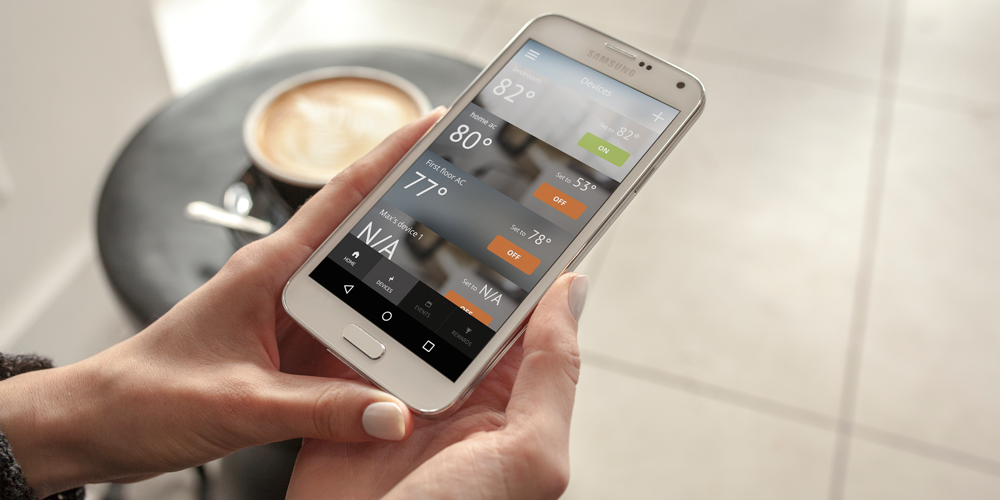Connected devices improve the user’s experience by simplifying some task, often collecting data along the way. SmartAC kits from ThinkEco have been doing both these things and using the data to aid in energy conservation since The Architechnologist first met ThinkEco way back in 2010. The kits add limited connected capabilities to otherwise “dumb” plug-in air conditioner units that are common in many households. In When the Internet of Things is Only One Thing (The Architechnologist, June 30, 2016), we explained that SmartAC kits are not truly Internet of Things (IoT) devices as they do not communicate with anything other than themselves and their data collection centers.

Image Credit: ThinkEco
Each smartAC kit consists of a “modlet” that controls the power to the AC unit and a battery-operated thermostat/remote. The modlet, connected between the outlet (either 110 or 220-volt) and the air conditioner itself, turns the unit on or off based on the temperature that the user has set. Data collected from the modlets is shared with the energy company supplying power to the location (including Con Edison here in New York City), providing information on efficiency and power consumption. Power companies can also declare “Demand Response” events if high temperatures are predicted which would cause stress on the power grid – during these events, the set temperature for each modlet is raised by a few degrees, easing demand by making a relatively small change over all smartAC users.
All new smartAC kits connect through WiFi and appear to have a more stable connection than the original kits that were based on the low-power ZigBee protocol that is commonly used for IoT devices. ThinkEco is currently the only company that has integrated the data-sharing program with air-conditioners that have embedded Wi-Fi capabilities to include them in utility programs. The Friedrich Kuhl and Frigidaire Gallery Cool Connect lines are already available and GE devices are expected to be connected soon.
SmartAC kits are available to purchase directly from ThinkEco (www.thinkeco.com) but many utility companies that participate in the program will provide them for free on request; both Pacific Gas and Electric Company (PGEC smartAC link) and Con Edison (ConEd smartAC link) offer free units.
Integrating the ThinkEco system into a larger Internet of Things ecosystem could only help the development of the system and potentially increase adoption. Our research has found no other connected 220-volt outlets (typically used for larger appliances, like air conditioners, freezers, etc.), if such devices existed then a simple smart sensor could replicate the functionality of the smartAC system and expand on it by connecting to a single central thermostat (perhaps the Nest or Ecobee4 — Amazon affiliate links). The unique benefit of ThinkEco’s smartAC system is the data and the connection to the utility company and their ability to help region-wide through “Demand Response” events and the economic and ecological returns it can provide.
